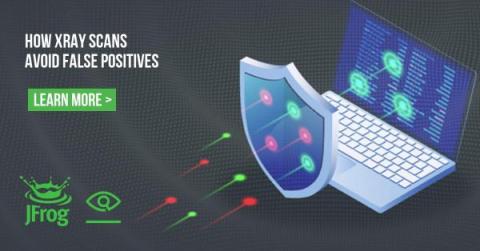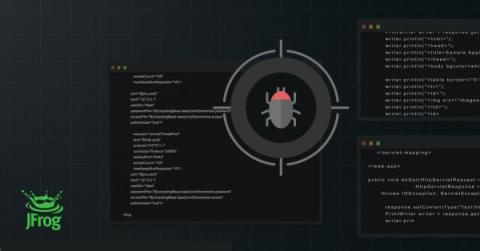Security | Threat Detection | Cyberattacks | DevSecOps | Compliance
JFrog
CVE-2022-21449 "Psychic Signatures": Analyzing the New Java Crypto Vulnerability
A few days ago, security researcher Neil Madden published a blog post, in which he provided details about a newly disclosed vulnerability in Java, CVE-2022-21449 or “Psychic Signatures”. This security vulnerability originates in an improper implementation of the ECDSA signature verification algorithm, introduced in Java 15.
Wolves or Sheep: How Xray Avoids False Positives in Vulnerabilities Scans
You probably know the story of “the boy who cried ‘Wolf!’” In the ancient fable, villagers tire of a shepherd’s false alarms, and stop paying attention to them. That’s a lesson for software security teams, not just schoolchildren. Raising concerns about threats that turn out to be flimsy or false erodes the trust that binds your department, and even the faith your customers have in you.
CVE-2022-24675 - Stack overflow (exhaustion) in Go's PEM decoder
A few days ago it was reported that the new Go versions 1.18.1 and 1.17.9 contain fixes for a stack overflow vulnerability in the encoding/pem builtin package, in the Decode function. Given the high popularity of Go among our customers and in the industry at large, this update led us to investigate the vulnerability in previous versions.
Secure your git repository with Frogbot the git bot
Introducing the newest member of the JFrog ecosystem team – Frogbot. This new git bot tool works for you by protecting your git projects, as they are being developed, from security vulnerabilities. Register for my talk “Bots to Protect your Source Code” swampUP 2022.
How to Integrate JFrog and Cycode
Four years ago the Clark School of engineering at the University of Maryland published a study quantifying that there is some kind of hacker attack happening every 39 seconds (on average). Which is unreal!! Source: University of Maryland A cyberattack can harm millions of people. Let’s take for example the Atlanta ransomware attack that used the infamous SamSam ransomware. The attackers asked for a ransom of $51,000.
SpringShell (Spring4Shell) Zero-Day Vulnerability CVE-2022-22965 : All You Need To Know
On March 29th, the cyberkendra security blog posted a sensational post about a Log4Shell-equivalent zero-day vulnerability in Spring Framework, but without any solid details about the vulnerability itself.
Large-scale npm attack targets Azure developers with malicious packages
The JFrog Security research team continuously monitors popular open source software (OSS) repositories with our automated tooling to avert potential software supply chain security threats, and reports any vulnerabilities or malicious packages discovered to repository maintainers and the wider community. Two days ago, several of our automated analyzers started alerting on a set of packages in the npm Registry.
Part II: A Journey Into the World of An Automated Security Operation Center (SOC)
Security operation teams continuously aim to focus on two main things: 1. Real cyber security threats (also known as “True Positive Alerts”), and 2. Reducing response time, especially when you have so many different sources to monitor. However, in reality, we deal with hundreds of security alerts on a daily basis, many of which are false positives that waste our valuable time. This is where incident response/security automation becomes a requirement rather than nice to have.
Diving into CVE-2022-23943 - a new Apache memory corruption vulnerability
A few days ago it was reported that the new Apache version 2.4.53 contains fixes for several bugs which exposed the users of the well known HTTP server to attacks: CVE-2022-22719 relates to a bug in the mod_lua modules which may lead to Denial of Service after reading from a random memory Area, CVE-2022-22720 exposes the server to HTTP Smuggling attacks, CVE-2022-22721 exposes the server to a buffer overflow when handling large XML input, and CVE-2022-23943 is a vulnerability in the mod_sed module, whi











